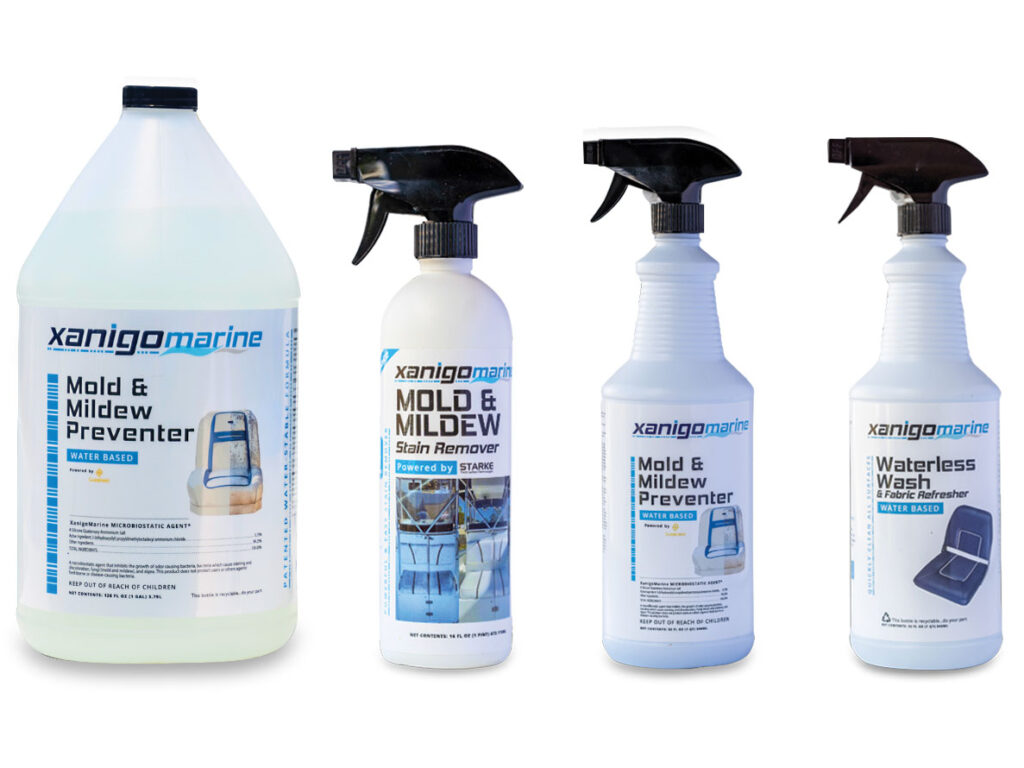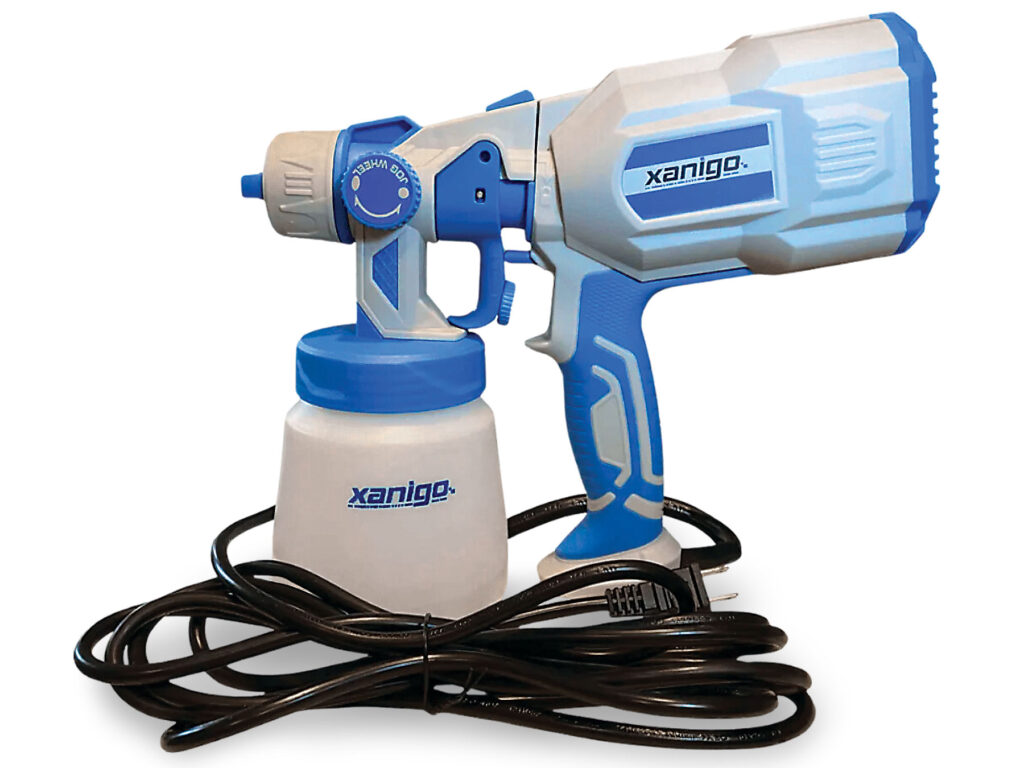How to Protect Your Boat’s Vinyl From Mold and Mildew

Courtesy Xanigo Marine
New-boat vinyl has protective antimicrobials that tend to last a year or so. After that, the vinyl can begin to show signs of mildew growth—a sign you’ve waited too long to apply a preventer, because once it appears, removing it completely is pretty much impossible, even though many products, when properly applied, appear to do so. It’s a management problem you’ll have to stay on top of at all times. Here’s how I effectively fight this battle aboard my own boat.
Marine vinyl is treated with persistent antimicrobial disinfectants with a finite life span consisting of months. Frequent contact with sunscreen, sweat, and dirt damages polymers in vinyl and the microbial barriers in it. The best way to treat mildew is to prevent it by thoroughly washing your vinyl after boating to remove oil, sweat and grime. Then treat it with a mildew preventer to restore its protective antimicrobial coating.
If you allow mildew to appear, you’ll have an ongoing maintenance issue of which you’ll never be entirely free. You’ll need to use mildew removers that are various derivatives of chlorine. Star brite’s mildew remover is sodium hypochlorite and sodium hydroxide. The former you know as bleach; the latter is a common compound in spray cleaners. The chlorine or bleach is destructive to threads, fibers, and polymers of your upholstery. Safe use requires thorough flushing after application, though water might not be entirely effective at penetrating stitching to wash out the chlorine.
Xanigo makes a system for mildew treatment that includes a remover, a waterless wash that neutralizes the remover, and a mold and mildew preventer that replaces the antimicrobial coating your vinyl was born with. We used it, and here’s how it works.
Remove the Mold
Xanigo’s mildew remover ($24.99) is a compound of chlorine bleach diluted to a safe handling level while maintaining its lethality to mold. Spray it on while wearing gloves, a mask and safety glasses. Goggles are best to ensure that spray doesn’t drift into your eyes.
Neutralize the Bleach
Once the mildew remover is applied, rinse well with fresh water and dry, then follow up with Xanigo’s waterless wash ($34.99). Spray it on, paying special attention to seams and threads. Let it sit a minute or so, then wipe it in with a microfiber cloth.
Read Next: How to Wash a Boat the Right Way

Courtesy Xanigo Marine
Stop Mold Growth
We don’t know the exact chemistry of Xanigo’s mold and mildew preventer ($39.99), but we do know that it works. My three-year-old Ranger bay boat began showing signs of mold at about 18 months of age. The battle is ongoing, but the preventer held off mold for about 90 days, a long life span in Florida’s heat and humidity.
The preventer comes in a spray bottle, but for the professional detailer, Xanigo has designed a 120-volt atomizer ($249.99) or a cordless model ($349.99), which turns its preventer from liquid to near vapor. The effect is to provide an optimal coating of the preventer that can penetrate the threads, seams, and pores of the vinyl. When left to dry in place, the coating effectively stops mold growth for up to three months. In humid climates, it is wise to reapply in about half that time.
The post How to Protect Your Boat’s Vinyl From Mold and Mildew appeared first on Boating Mag.
Randy Vance
Go to Source